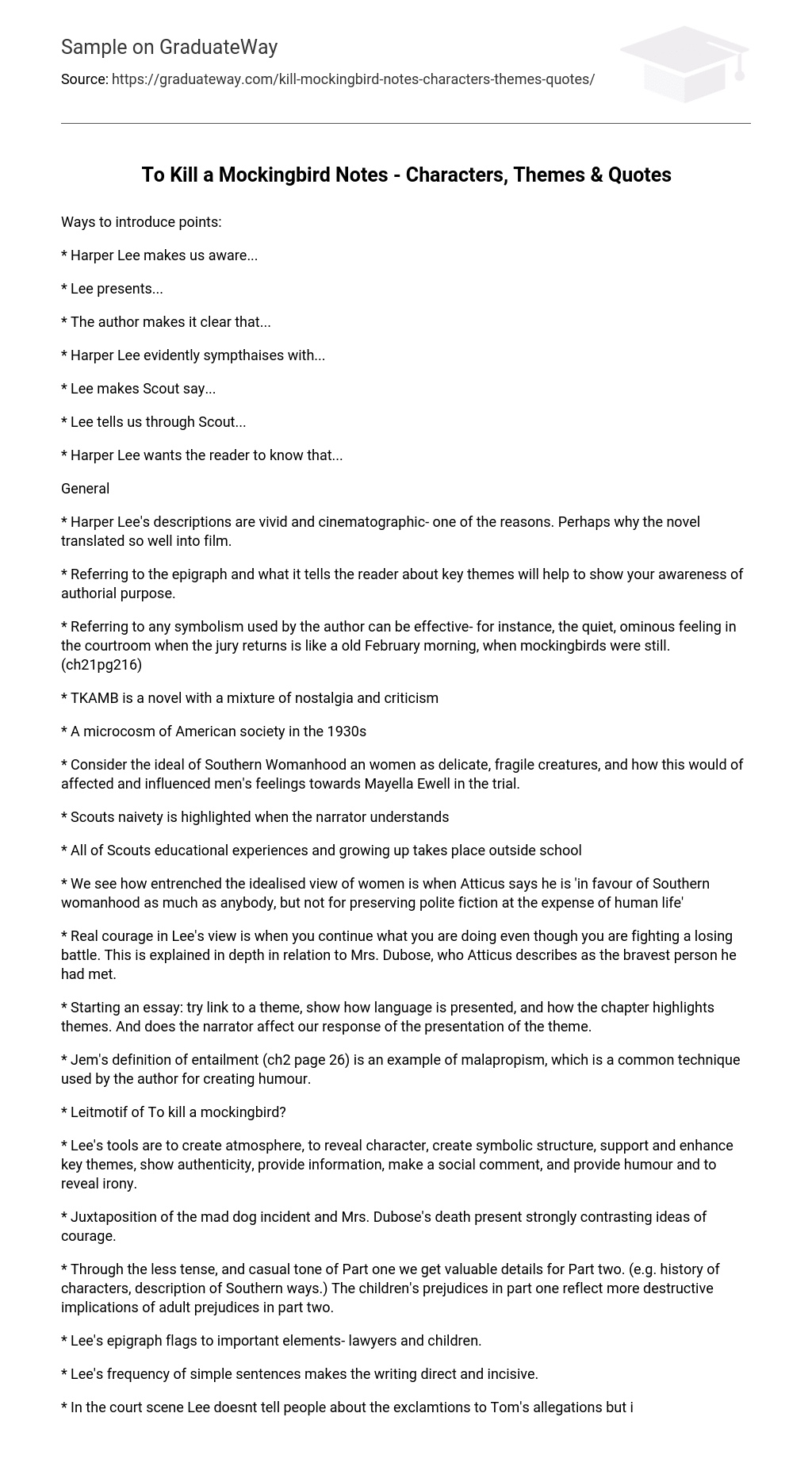- Harper Lee’s descriptions are vivid and cinematographic- one of the reasons. Perhaps why the novel translated so well into film.
- Referring to the epigraph and what it tells the reader about key themes will help to show your awareness of authorial purpose.
- Referring to any symbolism used by the author can be effective- for instance, the quiet, ominous feeling in the courtroom when the jury returns is like a old February morning, when mockingbirds were still. (ch21pg216)
- TKAMB is a novel with a mixture of nostalgia and criticism
- A microcosm of American society in the 1930s
- Consider the ideal of Southern Womanhood an women as delicate, fragile creatures, and how this would of affected and influenced men’s feelings towards Mayella Ewell in the trial.
- Scouts naivety is highlighted when the narrator understands
- All of Scouts educational experiences and growing up takes place outside school
- We see how entrenched the idealised view of women is when Atticus says he is ‘in favour of Southern womanhood as much as anybody, but not for preserving polite fiction at the expense of human life’
- Real courage in Lee’s view is when you continue what you are doing even though you are fighting a losing battle. This is explained in depth in relation to Mrs. Dubose, who Atticus describes as the bravest person he had met.
- Starting an essay: try link to a theme, show how language is presented, and how the chapter highlights themes. And does the narrator affect our response of the presentation of the theme.
- Jem’s definition of entailment (ch2 page 26) is an example of malapropism, which is a common technique used by the author for creating humour.
- Lee’s tools are to create atmosphere, to reveal character, create symbolic structure, support and enhance key themes, show authenticity, provide information, make a social comment, and provide humour and to reveal irony.
- Juxtaposition of the mad dog incident and Mrs. Dubose’s death present strongly contrasting ideas of courage.
- Through the less tense, and casual tone of Part one we get valuable details for Part two. (e.g. history of characters, description of Southern ways.) The children’s prejudices in part one reflect more destructive implications of adult prejudices in part two.





